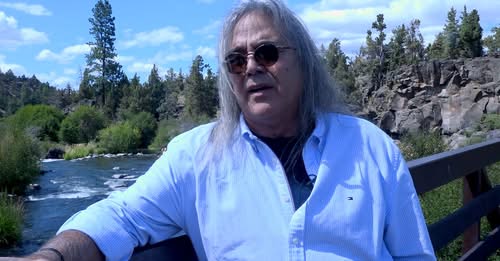PREVENTING TRAGEDY: Central Oregon Man Who Lost Family Members to Dillon Falls Pushes for Safety Measures to Spare Others from Heartbreak
Central Oregon — For many, the sparkling Deschutes River near Dillon Falls is a haven for outdoor recreation—kayaking, paddleboarding, fishing, and floating in the summer sun. But for one grieving Central Oregon man, it is also the place where his life was changed forever.
Earlier this summer, tragedy struck when two members of his family lost their lives after being swept into the powerful and dangerous rapids at Dillon Falls. The accident devastated not only his family but rippled through the tight-knit Central Oregon community, shaking many who had underestimated the treacherous nature of that section of the river.
Now, driven by both grief and a fierce determination to prevent further loss, the man—whose name is being respectfully withheld at his request—is calling for urgent action to make the area safer. He is advocating for increased signage, barriers, public awareness campaigns, and clearer education on the risks that lie beneath the beauty of the falls.
“I can’t bring my family back,” he said quietly during an emotional interview. “But if I can stop just one other family from going through what we did, it will mean something. This cannot keep happening.”
A Hidden Danger
Dillon Falls, located just a few miles west of Bend, Oregon, is known for its dramatic drop and violent whitewater—an impressive sight for thrill-seekers and nature lovers alike. However, it poses a lethal risk to the unsuspecting. While upstream sections of the Deschutes are relatively calm, the sudden transition to class V rapids at Dillon Falls can catch people off guard, especially those floating or paddling unaware of what lies ahead.
In the case of this family, what began as a peaceful float down the river ended in disaster. “They were experienced outdoorspeople. They weren’t reckless,” he explained. “But the signs weren’t clear. The warnings came too late. The river just took them.”
A Call for Action
Now, this bereaved man has taken it upon himself to be a voice for those who can no longer speak. Partnering with other families who’ve experienced similar heartbreak, he has begun working with local officials, environmental groups, and recreational outfitters to push for change.
Among the proposals:
-
Stronger, more visible warning signs placed far upstream, well before Dillon Falls, with multilingual messaging and visual alerts.
-
Physical barriers or booms to redirect floaters and recreational users away from the danger zone.
-
Emergency call boxes and lifebuoys installed along the riverbank.
-
An educational campaign targeting tourists and new residents, informing them of the river’s dangers and how to navigate it safely.
-
QR-coded markers that link to real-time river conditions, safety videos, and location maps.
So far, Deschutes County officials and the U.S. Forest Service—who manage parts of the river—have expressed openness to exploring new safety measures, though they cite budget limitations and environmental impact assessments as challenges.
Still, momentum is growing. “This isn’t about restricting access,” he emphasized. “It’s about giving people the information and tools to stay alive. The river is for everyone—but everyone needs to understand the risks.”
A Community Responds
In the weeks following the incident, memorials appeared along the banks of the Deschutes—flowers, candles, photos, and hand-written notes paying tribute to the lives lost and the love shared. The tragedy has stirred a deeper conversation in the region about the balance between natural beauty and public safety.
Outdoor guides and businesses have voiced their support for increased signage and education. “We want our clients to be safe,” said one rafting guide. “Dillon Falls is stunning, but it can be unforgiving. With just a few small steps, we can keep people informed and alive.”
Local schools and community centers have even discussed incorporating river safety into outdoor education programs for young people.
From Grief to Purpose
What began as unimaginable loss has become a mission for change. The man who lost so much now stands as a quiet, determined advocate—channeling his pain into action that may save lives.
“I walk that river every day now,” he says. “I talk to them there. And every time I do, I tell them I’m not going to stop. Their lives will not be in vain.”
His story serves as both a powerful reminder and a call to action. Nature is breathtaking, but it demands our respect. With awareness, education, and community effort, we can honor those lost by protecting those still here.
Because no one should have to bury a loved one after what was supposed to be a day of joy on the water.
—

Leave a Reply